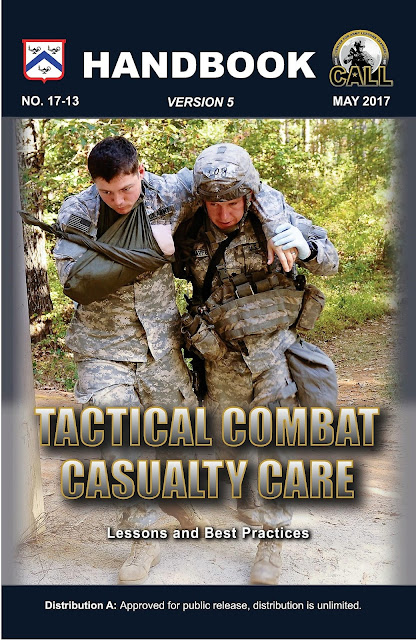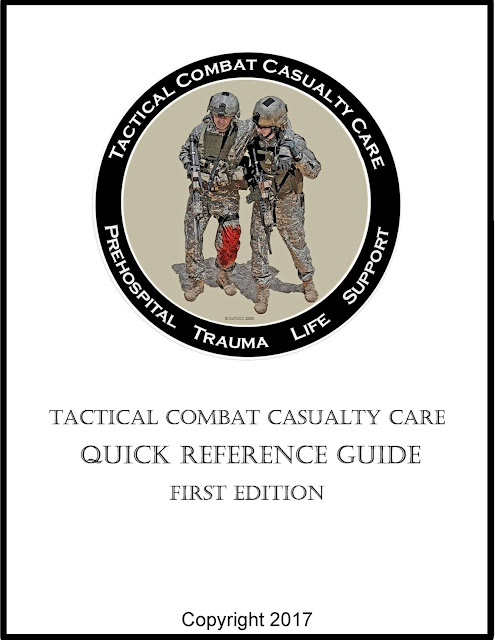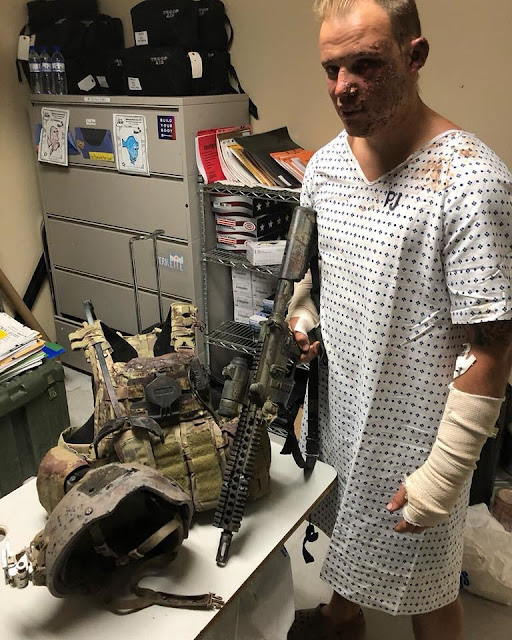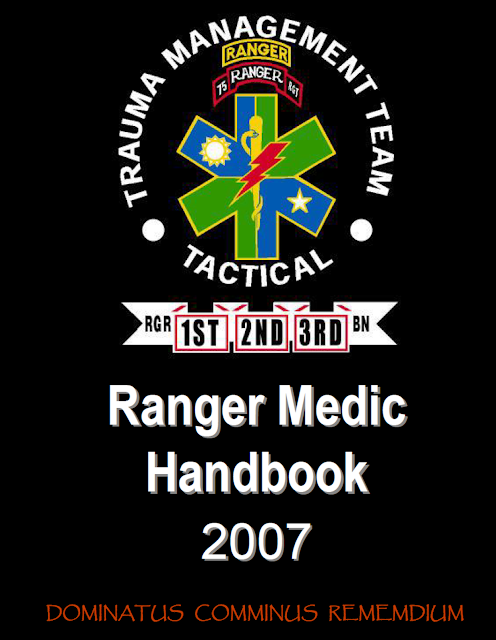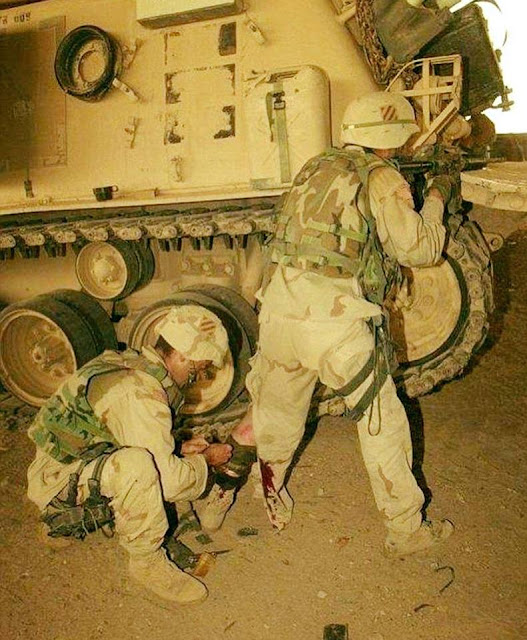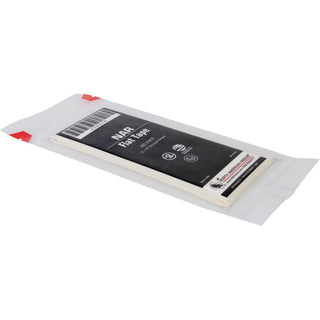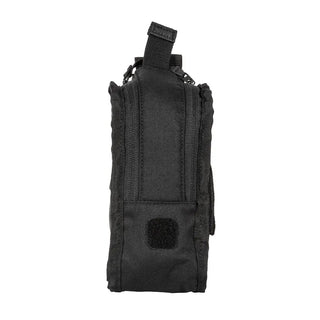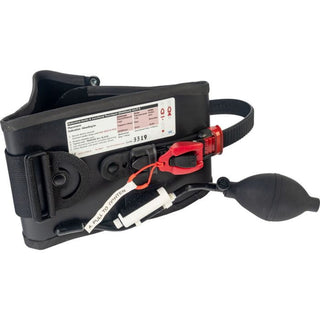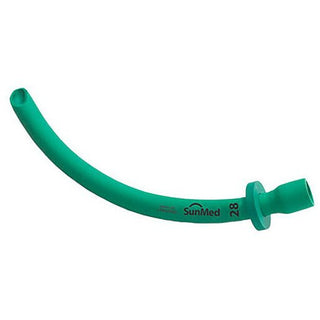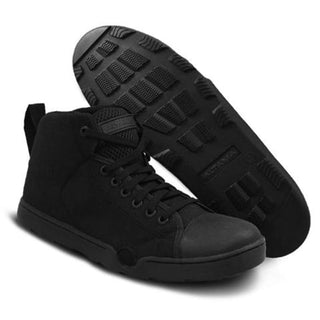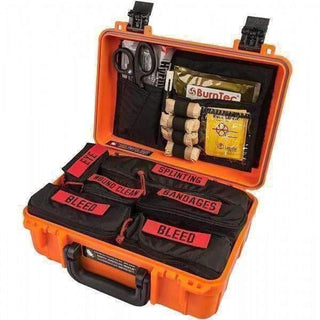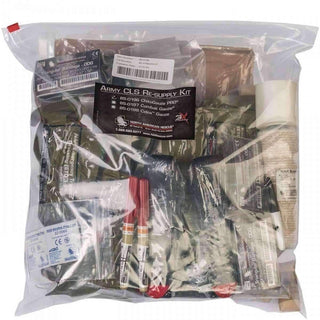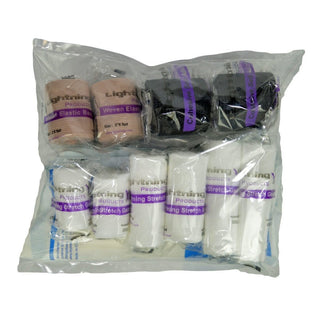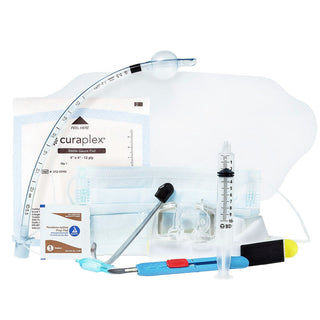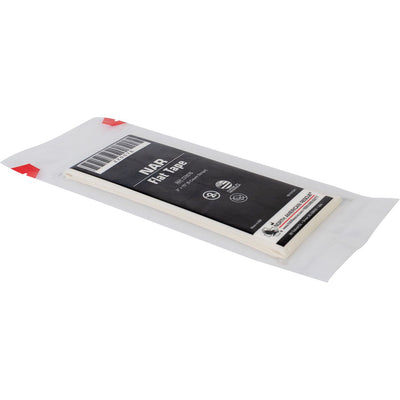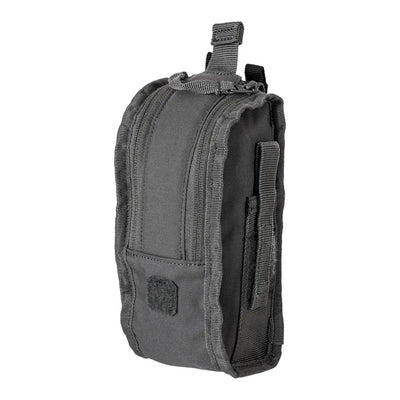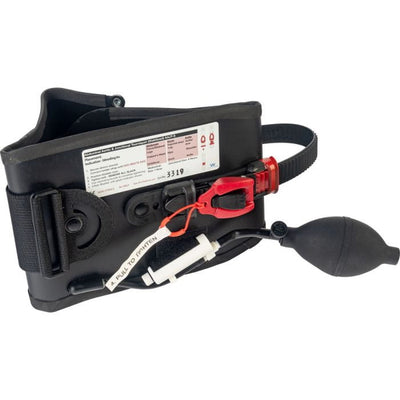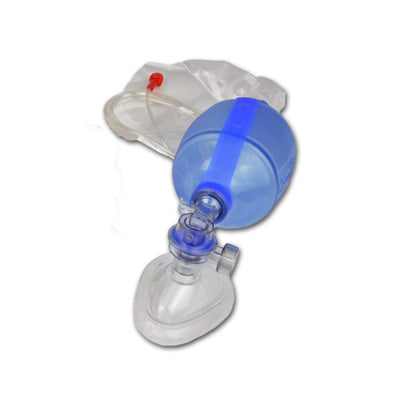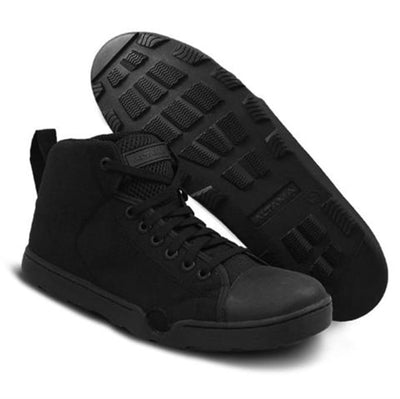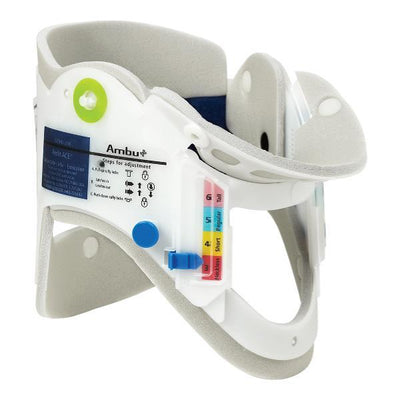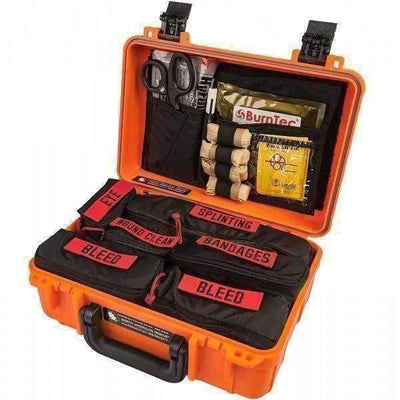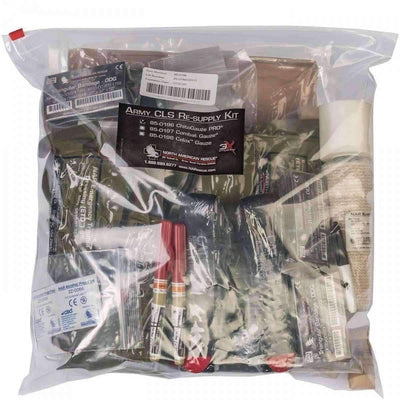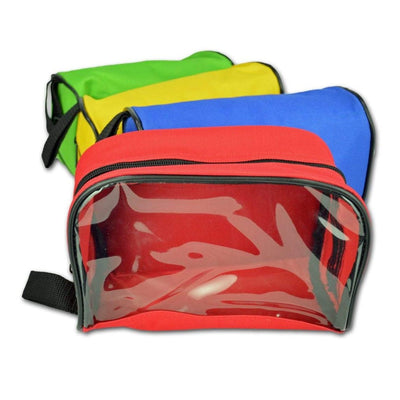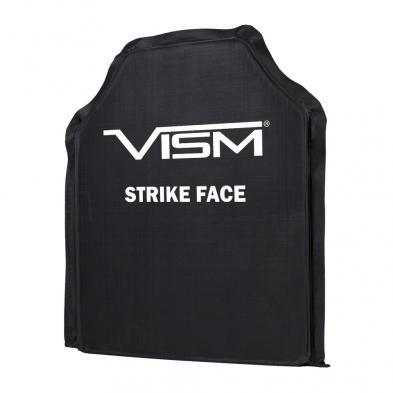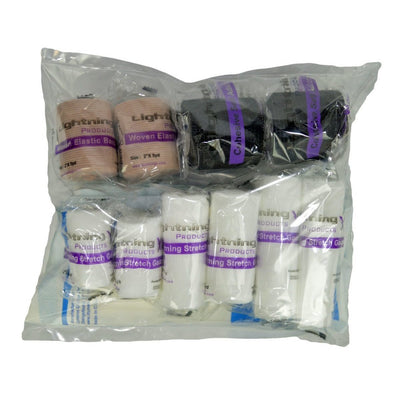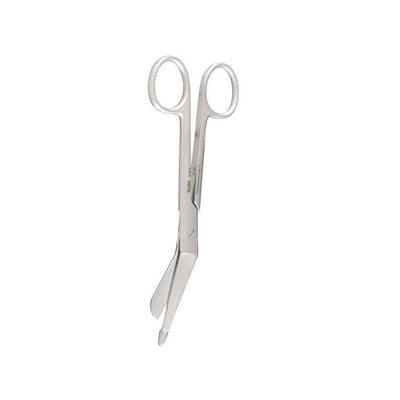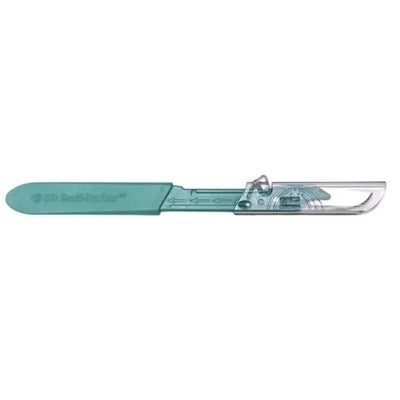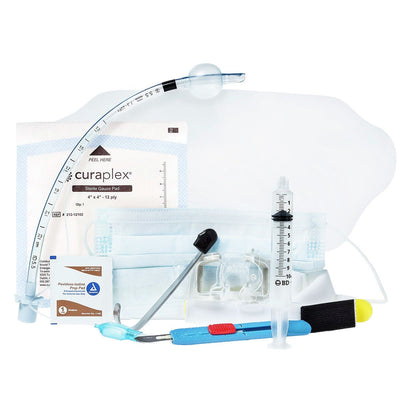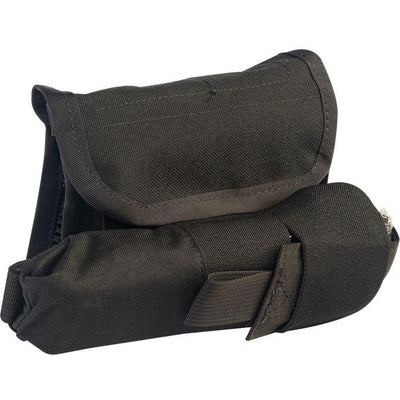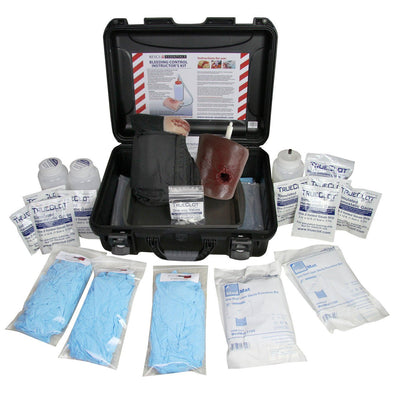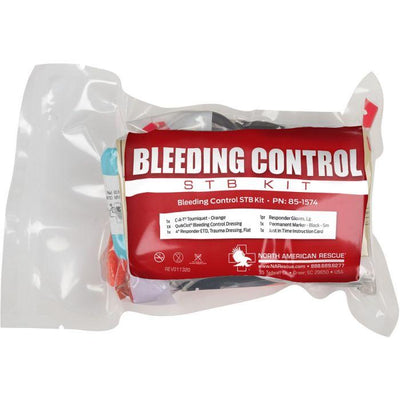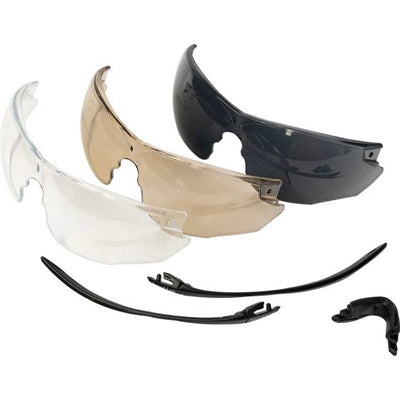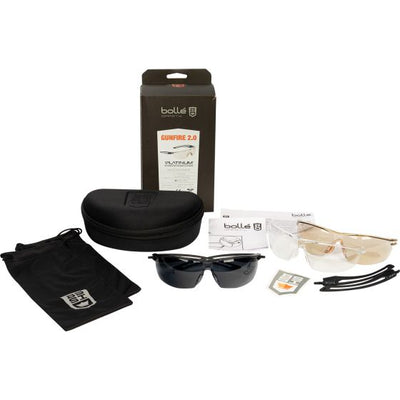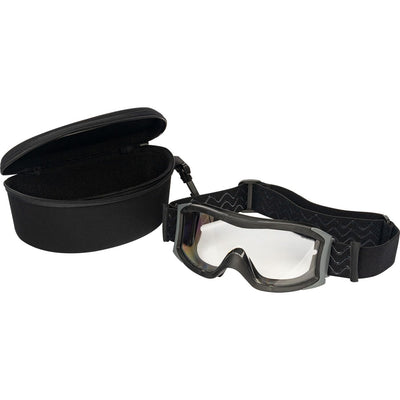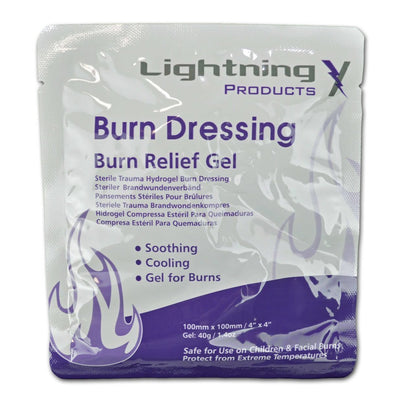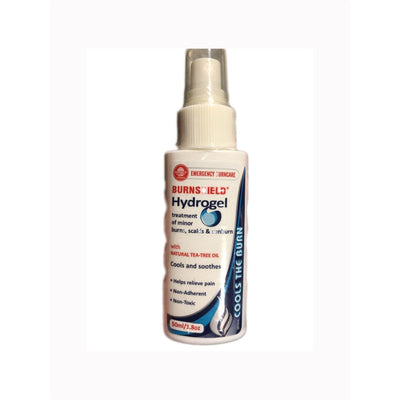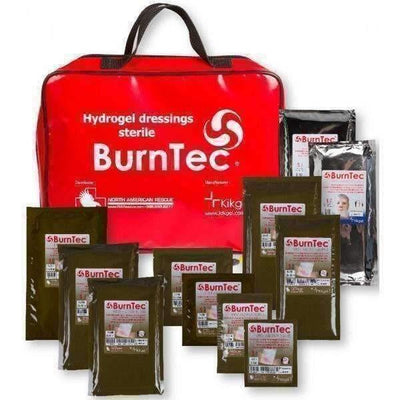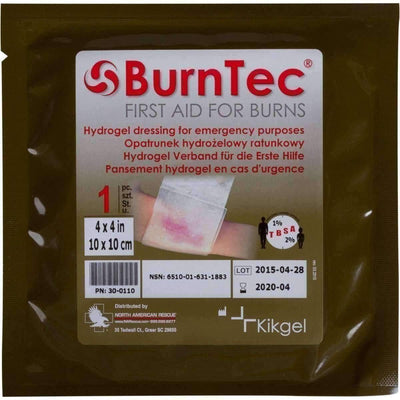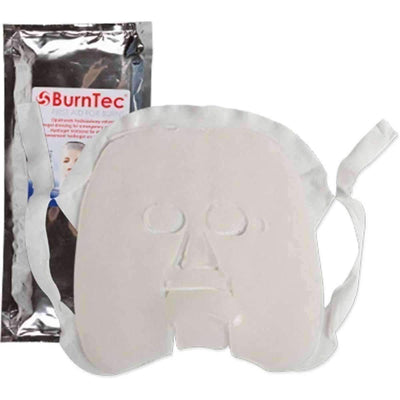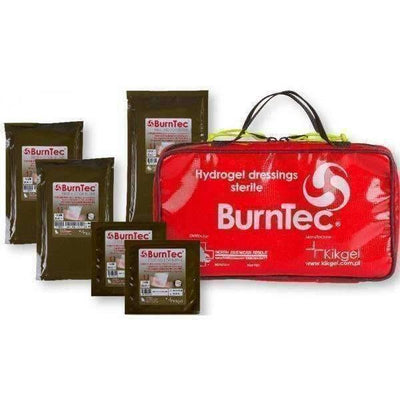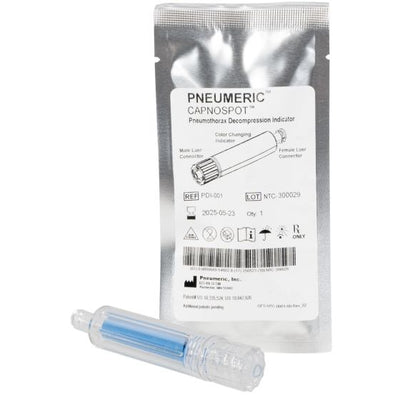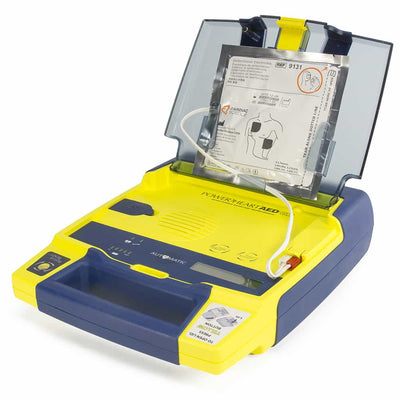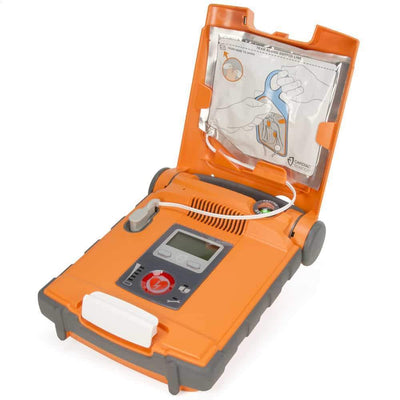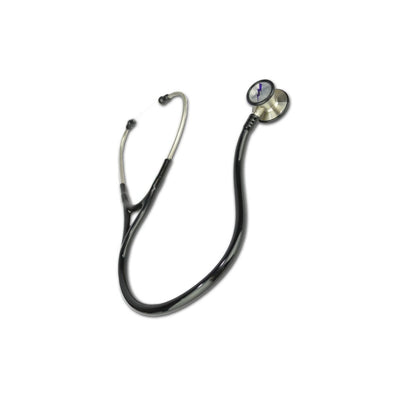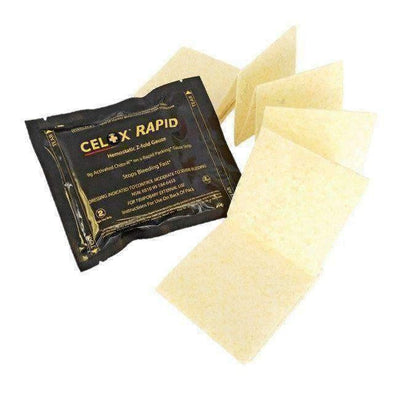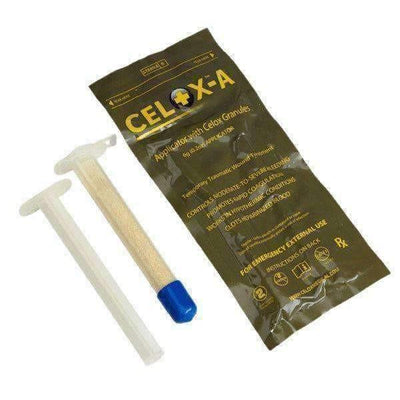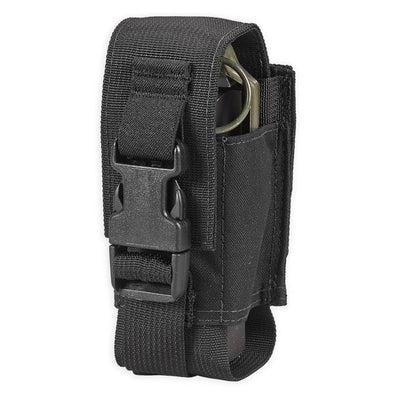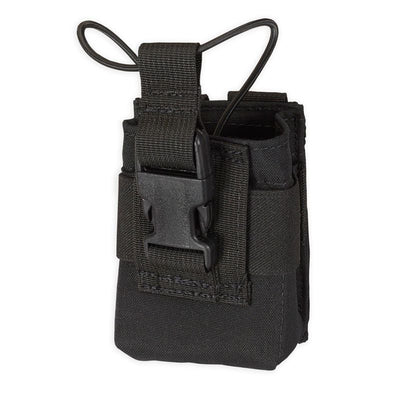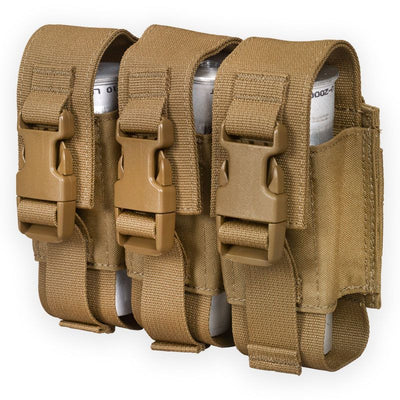23 de septiembre de 2018 ● 1:25 p. M.
La decisión fue tomada: el personal del SAMU 83 del área de Toulon ahora estará equipado con chalecos antibalas.
Han llegado dos lotes, uno para el SMUR La Seyne, el segundo para uno de los equipos de Toulon explica Var-Matin.
"También intervenimos muy regularmente en situaciones muy delicadas"
"El SMUR no está destinado, durante un ataque, a estar presente en los corredores de extracción, pero interviene cerca de estas áreas. También trabajamos con regularidad en situaciones altamente sensibles, aún no estabilizados, tales como disparos o ataques con cuchillos ", dijo el Dr. Lawrence BeCe, gerente de servicio de ambulancia 83, el periódico regional.
¿Harán otros SAMU franceses la misma inversión? Al igual que los bomberos, regularmente se enfrentan a actos de violencia y con frecuencia intervienen al mismo tiempo que la policía.
MEDICINA TACTICA: PDF Manuales y GUIAS
MAS LIBROS MEDICINA Y SALUD
TCC-LEFR
Mochilas a prueba de balas nueva tendencia en inicio escuela en los EUA emssolutionsint.blogspot.com/2018/09/mochilas-prueba-de-balas-nueva.html
TECC
TCCC Tactical Combat Casualty Care Handbook
TACMED España
BCon Saber un poco mas sobre control de sangrados
Hartford
Tactical Medics vs Rescue Task Force
GUIA DE SOPORTE VITAL PARA SEGURIDAD PRIVADA COMO PRIMER INTERVINIENTE EN INCIDENTES ARMADOS. by Juan Jose Pajuelo Castro y David Grevillen Carretero. SEMES 2018
http://emssolutionsint.blogspot.com.es/2018/02/guia-de-soporte-vital-para-seguridad.html
PROTOCOLO PARA INTERVENCIONES DE SOPORTE VITAL EN INCIDENTES DE MÚLTIPLES VÍCTIMAS POR ATENTADOS TERRORISTAS ABRIL 2016 (Actualizado Marzo 2018) by Juan Jose Pajuelo
8 trampas a evitar en el controlhemorragias
Guia de Soporte en Incidentes con Amenaza para Primer Interviniente Policial by Juan Jose Pajuelo Castro emssolutionsint.blogspot.com/2018/07/guia-de-soporte-en-incidentes-con.html
TACTICAL COMBAT CASUALTY CARE Handbook version 5 May 2017 emssolutionsint.blogspot.com/2017/07/tactical-combat-casualty-care-handbook.html
Updated TCCC Guidelines (31 JAN 2017) "Actualizacion 2017 de las Guias" Tactical Combat Casualty Care emssolutionsint.blogspot.com/2012/07/presentacion-del-programa-phtls-tccc.html
TCCC TACTICAL COMBAT CASUALTY CARE Quick Reference Guide First Edition 2017 FREE PDF emssolutionsint.blogspot.com/2018/07/tccc-tactical-combat-casualty-care.html
Updated TCCC Guidelines (31 JAN 2017) "Actualizacion 2017 de las Guias" Tactical Combat Casualty Care emssolutionsint.blogspot.com.es/2012/07/presentacion-del-programa-phtls-tccc.html
MANUAL DE SOPORTE VITAL AVANZADO EN COMBATE Ministerio de Defensa España 2014 http://emssolutionsint.blogspot.com.es/2016/02/manual-de-soporte-vital-avanzado-en.html
COMTOMS TACTICAL MEDIC HANDBOOK 2013 Edition
Guías para el Manejo de Heridos en Incidentes Intencionados con Múltiples Víctimas y Tiradores Activo "MACTAC" emssolutionsint.blogspot.com/2016/12/guias-para-el-manejo-de-heridos-en.html
Manejo de Heridos en Incidentes Intencionados Múltiples Víctimas y Tiradores Activos 09/07/2017 emssolutionsint.blogspot.com/2018/07/manejo-de-heridos-en-incidentes.html
TERRORISMO Y SALUD PÚBLICA - "GESTIÓN SANITARIA DE ATENTADOS TERRORISTAS POR BOMBA" emssolutionsint.blogspot.com/2013/08/terrorismo-y-salud-publica-gestion.html
TRAUMA DE TORAX: DOCENA DE LA MUERTE en trauma toracico
https://emssolutionsint.blogspot.com.es/2013/01/penetrating-chest-trauma-photo-trauma.html
75th Ranger Regiment Trauma Management Team (Tactical) Ranger Medic Handbook FREE pdf emssolutionsint.blogspot.com.es/2018/02/75th-ranger-regiment-trauma-management.html
SPECIAL OPERATIONS FORCES Medical Handbook Free PDF emssolutionsint.blogspot.com/2018/02/special-operations-forces-medical.html
Balística de las heridas: introducción para los profesionales de la salud, del derecho, de las ciencias forenses, de las fuerzas armadas y de las fuerzas encargadas de hacer cumplir la ley http://emssolutionsint.blogspot.com/2017/04/balistica-de-las-heridas-introduccion.html
Guía para el manejo médico-quirúrgico de heridos en situación de conflicto armado by CICR http://emssolutionsint.blogspot.com/2017/09/guia-para-el-manejo-medico-quirurgico.html
CIRUGÍA DE GUERRA TRABAJAR CON RECURSOS LIMITADOS EN CONFLICTOS ARMADOS Y OTRAS SITUACIONES DE VIOLENCIA VOLUMEN 1 C. Giannou M. Baldan CICR http://emssolutionsint.blogspot.com.es/2013/01/cirugia-de-guerra-trabajar-con-recursos.html
Manual Suturas, Ligaduras, Nudos y Drenajes. Hospital Donostia, Pais Vasco. España http://emssolutionsint.blogspot.com/2017/09/manual-suturas-ligaduras-nudos-y.html
Manual CIERRE DE HERIDAS by ETHICON http://emssolutionsint.blogspot.com/2017/09/manual-cierre-de-heridas-by-ethicon.html
Manual de suturas. Menarini http://emssolutionsint.blogspot.com/2017/09/manual-de-suturas-menarini.html
Técnicas de Suturas para Enfermería ASEPEYO y 7 tipos de suturas que tienen que conocer estudiantes de medicina http://emssolutionsint.blogspot.com/2015/01/tecnicas-de-suturas-para-enfermeria.html
Cuaderno Enfermero.Cirugia Menor Heridas Suturas http://emssolutionsint.blogspot.com/2016/07/cuaderno-enfermerocirugia-menor-heridas.html
Manual Práctico de Cirugía Menor. Grupo de Cirugia Menor y Dermatologia. Societat Valenciana de Medicina Familiar i Comunitaria http://emssolutionsint.blogspot.com/2013/09/manual-practico-de-cirugia-menor.html
Protocolo de Atencion para Cirugia. Ministerio de Salud Publica Rep. Dominicana. Marzo 2016 http://emssolutionsint.blogspot.com/2016/09/protocolo-de-atencion-para-cirugia.html
Manual de esterilización para centros de salud. Organización Panamericana de la Salud http://emssolutionsint.blogspot.com/2016/07/manual-de-esterilizacion-para-centros.html
Asistencia de salud en peligro: la importancia de proteger al personal de salud en zonas de guerra PDF Gratis http://emssolutionsint.blogspot.com/2018/06/asistencia-de-salud-en-peligro-la.html
SERVICIOS PREHOSPITALARIOS Y DE AMBULANCIAS EN SITUACIONES DE RIESGO. PDF GRATIS http://emssolutionsint.blogspot.com/2018/06/servicios-prehospitalarios-y-de.html
PDF Update on Prehospital Trauma Courses, NAEMT, Alex Eastman, Lieutenant and Deputy Medical Director, City of Dallas http://emssolutionsint.blogspot.com.es/2016/12/phtls-prehospital-trauma-life-support.html
Tactical Emergency Casualty Care (TECC) Guidelines for First Responders with a Duty to Act Guías para Primeros Respondedores con Deber de Actuar “En Acto de Servicio” (Fuerzas de Seguridad, Bomberos no SEM) emssolutionsint.blogspot.com/2018/07/tactical-emergency-casualty-care-tecc.html
PAGINA FCEBOOK
https://www.facebook.com/TACMEDEspana/
TACMED Spain Medicina Tactica España GRUPO https://www.facebook.com/groups/311284402300505/
TERRORISMO Y SALUD PÚBLICA - "GESTIÓN SANITARIA DE ATENTADOS TERRORISTAS POR BOMBA" emssolutionsint.blogspot.com/2013/08/terrorismo-y-salud-publica-gestion.html
TRAUMA DE TORAX: DOCENA DE LA MUERTE en trauma toracico
https://emssolutionsint.blogspot.com.es/2013/01/penetrating-chest-trauma-photo-trauma.html
75th Ranger Regiment Trauma Management Team (Tactical) Ranger Medic Handbook FREE pdf emssolutionsint.blogspot.com.es/2018/02/75th-ranger-regiment-trauma-management.html
SERVICIOS PREHOSPITALARIOS Y DE AMBULANCIAS EN SITUACIONES DE RIESGO. PDF GRATIS http://
PDF Update on Prehospital Trauma Courses, NAEMT, Alex Eastman, Lieutenant and Deputy Medical Director, City of Dallas http://
https://www.facebook.com/TACMEDEspana/
TACMED Spain Medicina Tactica España GRUPO https://www.facebook.com/groups/311284402300505/
 |
| Tactical Combat Casualty Care TCCC |
Control de Sangrados España. STOPTHEBLEED BCon Basic by TACMED España
|
#McTAC #MEDICO #MD #MedicalDoctor #TACMEDSpain #EMS #TacticalMedicalSpecialist #TCCC #TECC #TACMED #TCCCac #TCCCmp #TCCLEFR #EMS
"SI TE OFERTAN EL CURSO TCC-LEFR por la NAEMT, pues le informo que desde hace un tiempo, NAEMT, NO Imparte este curso (Imparten el TCCC-AC). Asi que No tires tu dinero la NAEMT, NO te dara certificado oficial, valido por 4 años, si tomas un curso supuestamente oficial NAEMT" Dejo enlace a cursos certificados NAEMT (en web oficial), y ademas contactos en caso de tener dudas puedes contactar a sus autoridades, hablan en Español. (No aceptes ningun certificado, NO OFICIAL NAEMT.
Dejo enlace a ejemplo de certificados originales con codigo (Son los unicos validos desde Enero 2017).
Listado Cursos Oficiales NAEMT con Certificado valido por 4 años. NO TE DEJES TIMAR.
Advanced Medical Life Support (AMLS)
All Hazards Disaster Response (AHDR)
Emergency Pediatric Care (EPC)
Emergency Vehicle Operator Safety (EVOS)
EMS Safety
Geriatric Education for Emergency Medical Services (GEMS)
Prehospital Trauma Life Support (PHTLS)
Principles of Ethics and Personal Leadership (PEPL)
Psychological Trauma in the EMS Patient (PTEP)
Tactical Combat Casualty Care (TCCC) for medical military personnel
Tactical Combat Casualty Care for All Combatants (TCCC-AC) for NON-medical military personnel
Tactical Emergency Casualty Care (TECC)
NATIONAL ASSOCIATION OF EMERGENCY MEDICAL TECHNICIANS
PO Box 1400
Clinton, MS 39060-1400
Physical Address: 132-A East Northside Dr. Clinton, MS 39056 1-800-34-NAEMT P: 601-924-7744 F: 601-924-7325 Info@naemt.org Publicacion by Dr. Ramon Reyes, MD PROTOCOLO PARA INTERVENCIONES DE SOPORTE VITAL EN INCIDENTES DE MÚLTIPLES VÍCTIMAS POR ATENTADOS TERRORISTAS ABRIL 2016 (Actualizado Marzo 2018) by Juan Jose Pajuelohttp://emssolutionsint.blogspot.com.es/2018/03/protocolo-para-intervenciones-de.html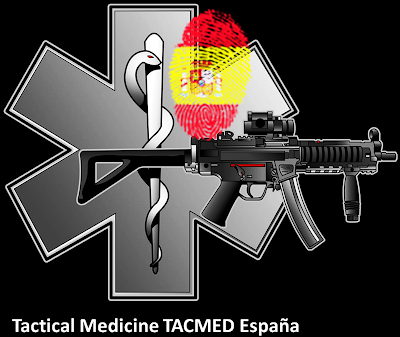
|
|
TACTICAL MEDICINE TACMED España by EMS Solutions International “Medicina Bona Locis Malis” tm |
Disminuir Mortalidad en España y a nivel global como consecuencia de violencia, incluyendo todos los escenarios posibles Combate (Medicina de Guerra), Terrorismo, Tiradores Activos y para ello nos enfocamos en compartir las actividades docentes, protocolos establecidos a nivel global por el CoTECC, CoTCC, OTAN, Consenso de Hartford, no somos excluyentes con la informacion, tratamos de llevar el mas alto nivel de impacialidad posible en la informacion y documentos compartidos.
Att.
Dr. Ramon Reyes, MD
Ex-Teniente de Navio
Faculty TCCC, TECC, PHTLS
@drramonreyesmd
Estamos en Facebook
Tactical Medicine Tacmed España @TACMEDEspana
Fan Page https://www.facebook.com/TACMEDEspana/
Christian Goring, EMT-P USA-Chile, Dr. Luis Alfredo Perez-Bolde, MD Mexico, Dr Ramon Reyes, MD Rep. Dominicana-España.
Exponieniendo situacion actual a nivel IBEROAMERICANO, como parte del Grupo Internacional del Comite TECC
Associate Director for Emergency Medicine at Denver Health Medical Center
Professor in the Division of Emergency Medicine in the Department of Surgery at the University of Colorado Health Sciences Center.
Responsable de que hoy hablemos de 8va edicion PHTLS, numeros libros y articulos, PPT de TECC-NAEMT, Desarrollo del TCC-LEFR, Bleeding Control Course PPT, PHTLS 8va PPT, entre otros trabajos importantes para reducir muertes por trauma.
Ultimo articulo del Dr. Pons en el enlace
 |
8 pitfalls to avoid in hemorrhage control by Dr. Peter Pons, FACEP
http://emssolutionsint.blogspot.com.es/2018/02/8-pitfalls-to-avoid-in-hemorrhage.html
https://www.facebook.com/notes/tactical-medicine-tacmed-espa%C3%B1a/stop-the-bleed-8-pitfalls-to-avoid-in-hemorrhage-control/1454537254641361/
Has been PHTLS Associate Medical Director Email: ptpons@aol.com Peter T. Pons, MD, is an emergency physician in Denver and has been actively involved with prehospital care and disaster preparedness for more than 30 years. He has worked as the Associate Director for Emergency Medicine at Denver Health Medical Center (formerly Denver General Hospital) and as Professor in the Division of Emergency Medicine in the Department of Surgery at the University of Colorado Health Sciences Center. Pons has served as the EMS Medical Director for the 9-1-1 paramedic ambulance service in Denver, based at Denver Health, as well as for several fire- based EMS systems. He has published numerous peer-reviewed journal articles on EMS and edited several textbooks for emergency medical technicians and paramedics. He has served as the physician director for numerous mass gatherings and special events in Denver, including the Denver Grand Prix, World Youth Day and the visit of Pope John Paul II. He has lectured nationally and internationally on EMS and served as a member and chair of the EMS Committee for the American College of Emergency Physicians. In addition, Pons has participated as an investigator on several federal grants including two AHRQ grants dealing with regional surge capacity and national bed availability and a HRSA WMD training grant (BNICE) for which he is curriculum coordinator and a trainer. http://www.naemt.org/education/peter%20pons%20bio.pdf
Tactical Emergency Casualty Care
NAEMT's Tactical Emergency Casualty Care (TECC) teaches EMS practitioners and other prehospital providers how to respond to and care for patients in a civilian tactical environment. It is designed to decrease preventable deaths in a tactical situation. The course presents the three phases of tactical care:
-
Direct Threat Care that is rendered while under attack or in adverse conditions.
-
Indirect Threat Care that is rendered while the threat has been suppressed, but may resurface at any point.
-
Evacuation Care that is rendered while the casualty is being evacuated from the incident site.
-
Hemorrhage control;
-
Surgical airway control and needle decompression;
-
Strategies for treating wounded responders in threatening environments;
-
Caring for pediatric patients; and
-
Techniques for dragging and carrying victims to safety.
|
|
|
Curso TCC-LEFR Tactical Casualty Care for Law Enforcement First Responders (Marca Registrada en EUA) by Dr. Peter Pons
|
| Curso TCC-LEFR Tactical Casualty Care for Law Enforcement First Responders (Marca Registrada en EUA) by Dr. Peter Pons Pronto tendremos de vuelta Curso TCC-LEFR Tactical Casualty Care for Law Enforcement First Responders |
Dirigido en Exclusivo a Fuerzas de Seguridad del Estado
Policias, Policias Militares, Policias Locales, Unidades de Internvencion Militares que trabajan en Entornos Civiles.
Guardia Civil
UME
Policia Local
CNP
Updated TCCC Guidelines (31 JAN 2017) "Actualizacion 2017 de las Guias" Tactical Combat Casualty Care
MANUAL DE SOPORTE VITAL AVANZADO EN COMBATE Ministerio de Defensa España 2014 http://emssolutionsint.blogspot.com.es/2016/02/manual-de-soporte-vital-avanzado-en.html |
TERRORISMO Y SALUD PÚBLICA - "GESTIÓN SANITARIA DE ATENTADOS TERRORISTAS POR BOMBA"
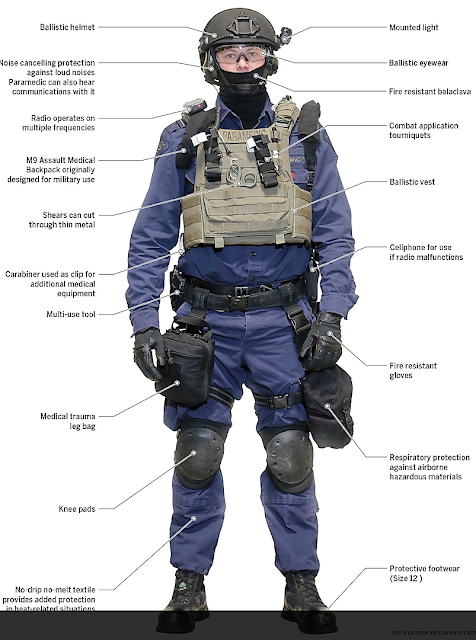 |
|
EPI Equipo de Proteccion Individual en Medicina Tactica (Personal Protective Equipment PPE) in Tactical Medicine
Medicina Tactica y Multiples Victimas en Ataque Terrorista
|
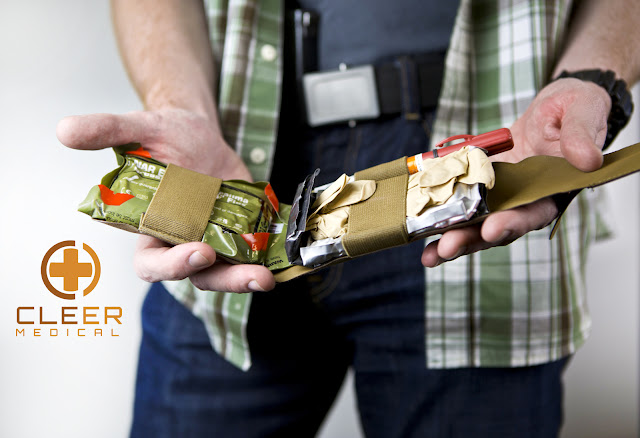 |
| Mini IFAK Contents (Contenido Mini IFAK) |
Mini IFAK Contents (Contenido Mini IFAK):
- TK-4L Rugged Combat Tourniquet
- QuikClot Advanced Clotting Sponge
- WoundStop Home Care First Aid Wound Dressing
- 3” x 18” Petrolatum Gauze
- 4” x 6 yds. Compressed Gauze
- Waterproof Combat Tape
- Pair Medical Gloves (XL)
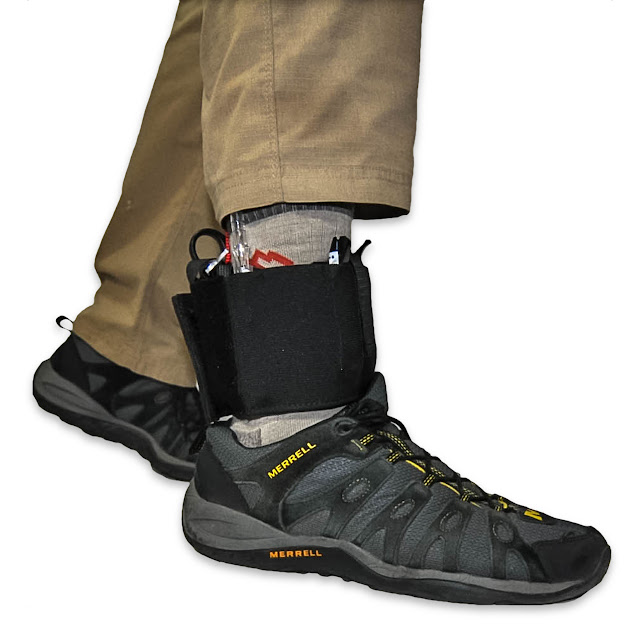 |
| Mini IFAK Contents (Contenido Mini IFAK) |
 |
| Trauma Response Kit "Bag" |
Me hago una preguna ¿Que pasara con esa madre amputada?
¿Que pasara con ese maestro con un pneumotorax?, ¿Que pasara con el que muera por obstruccion de via aerea ahogado en su propia sangre?
Mi pregunta es ¿Se negaron a acturar los SEMs en Barcelona? Cuando decidi ser medico me comprometi a salvar vidas, cuando decidi ser callejero lo hice por conviccion personal, me encanta ver como personas que se la pasan tonteando en las redes sociales, o vendediendose como expertos en la materia, a la hora de la verdad bailan como Michael Jackson hacia detras,,, no veo seriedad, ni mucho menos compromiso, en aquel que me diga que le teme a un tiro en un situacion de peligro, pero sin embargo pincha el acelerador de la ambulancia sin medir consecuencias y sin pensar en sus familiares. Pues Yo digo y repito, primero enterese que es Medicina Tactica, luego enterese cuales son las fases de actuacion con multiples victimas en situaciones tacticas (pero repito LEA) y luego se pasea por las redes sociales vendiendo fotos de que eres un experto en algo que inclusive los mas basico ignoras. les remito una de las que me han dicho en defensa de quedarse comiendo palomitas de maiz mientras las victimas en esas circunstancias mueren o empeoran ( es que no quiero que me peguen un tiro) y cuando le recrimino las falta de informacion esta es su respuesta...
Pues me han dicho, "mis asesores leen mucho", y yo le contesto a esas personas, Mis asesores, escriben lo que leen tus asesores...
Att.
drramonreyesmd
Tactical Medical Specialist-USA
Ex-Tte de Navio Medico de la Armada
PHTLS-TECC-TCCC Facultado Internacional
Medico Especialista en Misiones de Alto Riesgo y Zonas Hostiles
Colegiado en España
PAGINA FCEBOOK
https://www.facebook.com/TACMEDEspana/
TACMED Spain Medicina Tactica España
GRUPO https://www.facebook.com/groups/311284402300505/
EPI Equipo Proteccion Indivual
https://www.youtube.com/watch?v=ccIpnDjQjA0&feature=push-u-sub&attr_tag=Te_gBrXdW88JRKga%3A6
Este es un afortunado operador el #EPI Equipo de Proteccion Individual, hace su trabajo. Heridas de metralla por #RPG explosión en el aire de lanzacohetes antitanque portátil
Este es un afortunado operador el #EPI Equipo de Proteccion Individual, hace su trabajo. Heridas de metralla por #RPG explosión en el aire de lanzacohetes antitanque portátil
Este es un afortunado operador el #EPI Equipo de Proteccion Individual, hace su trabajo. Heridas de metralla por #RPG explosión en el aire de lanzacohetes antitanque portátil
Este es un afortunado operador el #EPI Equipo de Proteccion Individual, hace su trabajo. Heridas de metralla por #RPG explosión en el aire de lanzacohetes antitanque portátil
Este es un afortunado operador el #EPI Equipo de Proteccion Individual, hace su trabajo. Heridas de metralla por #RPG explosión en el aire de lanzacohetes antitanque portátil
 |
| EPI Equipo de Proteccion Individual en Medicina Tactica (Personal Protective Equipment PPE) in Tactical Medicine |
 |
| EPI Equipo de Proteccion Individual en Medicina Tactica (Personal Protective Equipment PPE) in Tactical Medicine |
 |
| EPI Equipo de Proteccion Individual en Medicina Tactica (Personal Protective Equipment PPE) in Tactical Medicine |
 |
| EPI Equipo de Proteccion Individual en Medicina Tactica (Personal Protective Equipment PPE) in Tactical Medicine |
| EPI Equipo de Proteccion Individual en Medicina Tactica (Personal Protective Equipment PPE) in Tactical Medicine |
 |
| EPI Equipo de Proteccion Individual en Medicina Tactica (Personal Protective Equipment PPE) in Tactical Medicine |
 |
| EPI Equipo de Protección Individual en Medicina Tactica (Personal Protective Equipment PPE) in Tactical Medicine |
 |
| EPI Equipo de Proteccion Individual en Medicina Tactica (Personal Protective Equipment PPE) in Tactical Medicine |
 |
| EPI Equipo de Proteccion Individual en Medicina Tactica (Personal Protective Equipment PPE) in Tactical Medicine |
 |
| EPI Equipo de Proteccion Individual en Medicina Tactica (Personal Protective Equipment PPE) in Tactical Medicine |
 |
| EPI Equipo de Protección Individual en Medicina Tactica (Personal Protective Equipment PPE) in Tactical Medicine |
GUIA DE SOPORTE VITAL EN INCIDENTES CON AMENAZA ELEVADA PARA PRIMER INTERVINIENTE POLICIAL by Juan Jose Pajuelo. España 2017
TACTICAL MEDICINE TACMED “Medicina Bona Locis Malis” tm. Good Medicine In Bad Places España by EMS Solutions International http://
Les esperamos en Nuestro Grupo en TELEGRAM
Sociedad Iberoamericana de Emergenciashttps://t.me/joinchat/
TACTICAL MEDICINE TACMED “Medicina Bona Locis Malis” tm. Good Medicine In Bad Places España by EMS Solutions International
Bolin Chest Seal
TRAUMA DE TORAX: DOCENA DE LA MUERTE en trauma toracico
Updated Training on How To Apply and Use the Bolin Chest Seal, our valved pneumothorax chest dressing
#Trauma #Openwound #Shoot #wound #TCCC #TECC #CTECC #CoTCCC #NAEMT #TACMEDSpain #MedicinaTacticaEspaña #EETI #PeterPons #Tourniquet #Pneumothorax #NEUMOTORAX #BCON #PHTLS #ATLS #TCClefr #TC2 #TC3 #ESPAÑA #SOMA #EMSWORLD
Curso TECC TACTICAL EMERGENCY CASUALTY CARE http://emssolutionsint.blogspot.no/2012/01/tactical-combat-casualty-care-tccc.html
.jpg) |
| PHTLS |
Todos Nuestros VIDEOS en YouTube https://www.youtube.com/c/ RamonReyes2015
Grupo en TELEGRAM Sociedad Iberoamericana de Emergencias
https://t.me/joinchat/FpTSAEHYjNLkNbq9204IzA
https://t.me/joinchat/FpTSAEHY
Balística de las heridas: introducción para los profesionales de la salud, del derecho, de las ciencias forenses, de las fuerzas armadas y de las fuerzas encargadas de hacer cumplir la ley http://emssolutionsint.blogspot.com/2017/04/balistica-de-las-heridas-introduccion.html
Guía para el manejo médico-quirúrgico de heridos en situación de conflicto armado by CICR http://emssolutionsint.blogspot.com/2017/09/guia-para-el-manejo-medico-quirurgico.html
CIRUGÍA DE GUERRA TRABAJAR CON RECURSOS LIMITADOS EN CONFLICTOS ARMADOS Y OTRAS SITUACIONES DE VIOLENCIA VOLUMEN 1 C. Giannou M. Baldan CICR http://emssolutionsint.blogspot.com.es/2013/01/cirugia-de-guerra-trabajar-con-recursos.html
Manual Suturas, Ligaduras, Nudos y Drenajes. Hospital Donostia, Pais Vasco. España http://emssolutionsint.blogspot.com/2017/09/manual-suturas-ligaduras-nudos-y.html
Manual CIERRE DE HERIDAS by ETHICON http://emssolutionsint.blogspot.com/2017/09/manual-cierre-de-heridas-by-ethicon.html
Manual de suturas. Menarini http://emssolutionsint.blogspot.com/2017/09/manual-de-suturas-menarini.html
Técnicas de Suturas para Enfermería ASEPEYO y 7 tipos de suturas que tienen que conocer estudiantes de medicina http://emssolutionsint.blogspot.com/2015/01/tecnicas-de-suturas-para-enfermeria.html
Cuaderno Enfermero.Cirugia Menor Heridas Suturas http://emssolutionsint.blogspot.com/2016/07/cuaderno-enfermerocirugia-menor-heridas.html
Manual Práctico de Cirugía Menor. Grupo de Cirugia Menor y Dermatologia. Societat Valenciana de Medicina Familiar i Comunitaria http://emssolutionsint.blogspot.com/2013/09/manual-practico-de-cirugia-menor.html
Protocolo de Atencion para Cirugia. Ministerio de Salud Publica Rep. Dominicana. Marzo 2016 http://emssolutionsint.blogspot.com/2016/09/protocolo-de-atencion-para-cirugia.html
Manual de esterilización para centros de salud. Organización Panamericana de la Salud http://emssolutionsint.blogspot.com/2016/07/manual-de-esterilizacion-para-centros.html
TACTICAL MEDICINE TACMED España by EMS Solutions International
http://emssolutionsint.blogspot.co.uk/2017/09/tactical-medicine-tacmed-espana-by-ems.html
Rapid Access Modular Medical Panel
• Fully customizable medical panel
• Zippered center allows panel to be split in two
• Removable interchangeable pouches
• Modular pouches can accommodate mission specific customization of medical supplies
• Bridges the gap between aid bags and larger storage containers
• Comes with interchangeable high visibility labels allow for easy supply category recognition
• Folds in half for easy storage
• Material: 1000D Cordura® Nylon
• Lifetime Warranty
• Made in the USA
• Weight: 9.6lbs
ACTIVE SHOOTER MASS CASUALTY PACK W/ FREE TRAINING MODULE https://www.officersurvivalsolutions.com/products/active-shooter-kit-detail.html
Description
El curso Tactical Emergency Casualty Care (TECC) de NAEMT está basado en los principios del Tactical Combat Casualty Care (TCCC) y cumple con las guías establecidas por el Comité de Cuidado Táctico en Emergencias (C-TECC). Este curso enseña a los técnicos de emergencias médicas a cómo responder a un evento de tiroteo activo (“active shooter”) o de múltiples víctimas de trauma.
El curso de TECC está diseñado para primeros respondedores a un incidente de múltiples víctimas. Medicina Bona Locis Malis = medicina buena en lugares peligrosos.
Se describen las fases de manejo en situaciones tacticas por parte de los Rescue Task Force TFR.
TACTICAL EMERGENCY CASUALTY CARE TECC
Course # TE-18-04082-03 - Site ID# 5388
Santo Domingo, Distrito Nacional
Republica Dominicana
http://
Contactos:
Dr. Ramon Reyes, MD
eeiispain@gmail.com
Alex Pacheco
809 849 9295
eeiird@gmail.com
19-20 de Mayo 2018
****CUPOS LIMITADOS****
Nos reservamos el derecho de admision
Inicio inscripcion:
01 Mayo 2018
Fin Inscripcion:
10 Mayo 2018
Cupos Limitados
Precio US$190 (156 Euros) Equivalentes Pesos Dominicanos
Deposito Cuenta Banco Popular Dominicano
RD$ Nº 759765241 (Enviar Recibo para asegurar el cupo)
Rescue Task Force RTF? / FUERZAS de TAREA de RESCATE
Guatemala military/medic special ops team. Art byDansun Photos @DansunPhotos
Todos Nuestros VIDEOS en YouTubehttps://www.youtube.com/c/
Grupo en TELEGRAM Sociedad Iberoamericana de Emergencias https://t.me/joinchat/
http://
Tactical Emergency Casualty Care (TECC) is a set of evidenced-based and best practice trauma care guidelines for civilian high-threat pre-hospital environments. The TECC guidelines are built upon the critical medical lessons learned by US and allied military forces over the past 15 years of conflict and codified in the doctrine of Tactical Combat Casualty Care (TCCC). Using the military TCCC guidelines as a starting point, the Committee creates the civilian high threat medical guidelines through a process of literature research, evidence evaluation, expert discussion, and civilian best practices review. The TECC guidelines are built upon the foundations of TCCC but are different to meet the unique needs of the civilian medical and operational environments. The differences address civilian specific language, provider scope of practice, population, civilian liability, civilian mission and operational constraints, logistics, and resource acquisition.
How are TECC and TCCC similar?
Tactical Emergency Casualty Care is a set of civilian medical guidelines for high threat operations. Tactical Combat Casualty Care is a set of military medical guidelines for care of the wounded during military combat operations. The two sets of guidelines are naturally related, but each with a necessary difference in language, scope, applicability and flexibility.
There are two key unifying principles of TCCC and TECC. First is the process of guideline development. Both Committees are comprised of medics, physicians, academics and operational leaders. Both Committees began with prior operational and medical lessons learned- for CoTCCC this was Vietnam and Somalia, for C-TECC this was TCCC and OIF/OEF- and rapidly evolved their recommendations based on immediate lessons learned. Second is an understanding that success requires developing and deploying a SYSTEM of care. In the military, TCCC’s success fundamentally lies in the fact that all personnel deploying to a combat theater were trained in the principles of TCCC. The operational and trauma care systems were built around this training.
This second fact is also the main limiting factor for the deployment of TCCC in the civilian setting. As a system, TCCC cannot be deployed in the civilian setting because many recommendations run counter to civilian scope of practice and medical standards (e.g. use of hextend for resuscitation, pre-hospital antibiotics, needle decompression practiced by non medical personnel, etc.).
How are TECC and TCCC different?
Tactical Emergency Casualty Care is the civilian evolution and application of the military Tactical Combat Casualty Care guidelines. When discussing the differences between the two, it is important to emphasize that TECC and TCCC are not in competition with each other; although, as the pictures from the recent Boston Marathon bombing demonstrate, the bullets and explosives may be similar in civilian settings as in military combat, this does not make the military guidelines directly applicable for civilian applications.
The two sets of guidelines are naturally related, but each with a necessary difference in language, scope, applicability and flexibility. There are three primary differences between TECC and TCCC: guideline terminology, trauma care recommendations and operational focus.
Terminology/ Language: TCCC was written by the military special operations community to specifically address the specificities and conditions surrounding combat operations. These guidelines are researched, developed, and written with the assumption that the patient is an otherwise healthy 18-45yo soldier and that the provider is working under the military defined scope of practice. The TCCC guidelines assume a military medical support system, military rules of engagement, and military legal precedent. While individual recommendations such as tourniquet use are valid, TCCC as a system has limited application in the civilian setting. The TCCC courses currently being taught were not intended for civilian application. The Pre-Hospital Trauma Life Support TCCC course comes from the military PHTLS textbook, a version that was specifically written for the military medical community because the civilian PHTLS textbook had a different focus and application.
All leaders with operational experience understand that the language changes in TECC are critical. As with the Incident Command System (ICS), common operating language is important for interagency response to complex threats. For example, “Care Under Fire”, has variable meanings across the Fire (e.g. actual fire), EMS (e.g. fire or gunshots- but a non operational zone) and Law Enforcement (e.g. active gunfire in the area) communities. Tactical Emergency Casualty Care was created to address these system limitations and specific scope of practice challenges related to TCCC. The C-TECC members, many of whom are active and past CoTCCC members, worked with civilian leaders to codify threat based guidelines (the core of TCCC) in a way that was easily applicable to civilian operations, legal and liability limitations and scope of practice, and in a way that is broadly applicable to the entirety of the civilian patient population.
Trauma care guidelines: TECC and TCCC trauma recommendations are closely related. TECC places less emphasis on pre-hospital antibiotics, hextend as a resuscitation fluid, and specific product solutions. The TECC guidelines place more emphasis on interagency communication, integrated operations between EMS, Fire and Law Enforcement, casualty extraction and evacuation, and care of non-combatant civilians. Additionally, as the civilian high threat focus continues with the results of on-going study and medical data, the recommendations of TECC will necessarily diverge in small ways from TCCC. One recent example is the 2013 pediatric TECC guidelines. Children are not accounted for in the TCCC guidelines as they are not in the military deployable population. As such, the C-TECC specifically examined the research and data specific to the pediatric population and created a specific set of recommendations for children.
Operational: The fundamental mission difference between the military and civilian high threat operations is important. In general, military operations focus on clearing, holding, and/or gaining territory with an emphasis on domination of enemy forces. By definition, civilian operations are rescue operations with the key missions of limiting civilian morbidity and mortality. Civilian first responders are sworn to “serve and protect”. Any guidelines must acknowledge this important difference and account for rescue operations, limitations in use of force, and other regional operational requirements.
How can I get certified in TECC?
The TECC guidelines are open source and non-proprietary with the exception of the TECC logo. There are currently no “official TECC courses” or a certified TECC provider/instructor.
The C-TECC believes that, though there are universal “principles” of high threat response, the application must be tailored for individual agencies based upon local resources, political climate, budget and operational experience. “Cookie cutter” or standardized courses and applications for high threat operations fail to account for the differences among first responders that vary widely jurisdiction to jurisdiction, region to region, state to state, etc. As such, the concepts and skills in these classes have to be ‘un-learned’ or ‘ignored’ because they do not fit into the specific agency SOP or scope.
TECC is not dogma, and the principles are meant to be applied uniquely by each agency that uses it, depending on that agency's provider levels, scope of practice, culture, patient population, risk assessment, etc. We consider the TECC guidelines to be a pile of bricks; take only the bricks that fit into your operational culture and build a response program that is unique to you. Just don’t change the individual bricks! Overall, the principles of TECC are not difficult to teach – the actual medical interventions such as pressure dressings and tourniquets are now commonplace for everyday trauma. What is unique about high threat medical principles is less about what is done medically and more about when it is done, what injuries on focused on, and what can be excluded.
There are training entities that offer TECC courses. The Committee does not require any of these as your application of TECC is unique to your agency. If you cannot develop your own training, several of these companies offer a solid foundation of training. In the future, those companies and institutions that meet the principles of TECC guidelines instruction as set forth by the Committee may display a special C-TECC logo and be listed on the C-TECC.org website; until then, if you take a TECC class, make sure you check into the background and experience of the instructors first, and make sure that they are not teaching you TCCC and calling it TECC!
How can I become a TECC instructor?
There is currently no C-TECC sanctioned certification or classification as a ‘TECC instructor.” If you have the operational and educational experience to teach in your agency, if you have experience as an educator, or you are recognized by your agency as an instructor, you can take the open source TECC guidelines and create a course of instruction specific to your agency’s SOPs.
I am a certified TCCC instructor. Can I teach TECC?
Sure, although it is certainly not required. Knowledge of TCCC is helpful as TCCC is the starting point for TECC. You must understand however that the two are not the same, and must be clear on the differences between the two. Please also refer to the TECC skill set; at no point should skills outside of scope of practice be taught to students as a part of TECC. For example, although TECC includes needle decompression of a chest, this skill set should NOT be taught to providers if it is not specifically included in their scope of practice. Other than that, if you are familiar with instruction of the military combat medical guidelines, then your understanding of how to instruct the civilian high threat medical guidelines should be solid!
How can my department or agency start a TECC program?
Implementing the TECC guidelines into your agency’s standard operations for high threat response is not as ‘heavy a lift’ or difficult as one would think. If you have an operational plan for deployment of assets and operations during situations of high threat, the medical guidelines will fit in easily. The individual TECC guidelines, such as applying a tourniquet or using hemostatic gauze, are becoming common place in everyday pre-hospital management of trauma. Remember that TECC is less about what you do and more about when you do it. Teaching the TECC guidelines to your agency should be done in a way that is specific to your agency’s culture, scope, and approach to operational training.
The Committee for Tactical Emergency Casualty Care is committed to assisting all response agencies and first responders who wish to utilize the guidelines. We have, and are working on, a variety of resources to assist you. Currently, we can provide a variety of educational articles and plenty of advice on how to get started. In the near future, we will be distributing a standard slide deck to get you started in teaching the guidelines. Feel free to contact the Committee with any questions or request for assistance.
Is TECC only for law enforcement and SWAT operations?
Absolutely not!!! Yes, it does have the word ‘tactical’ in its name but do not think that implies that the guidelines are for use only in law enforcement or tactical medical operations. Although the word ‘tactical’ in common use implies law enforcement associated operations, every first responder utilizes ‘tactics’ on every call every day. The Committee uses the word tactical to refer to the operational decisions that are made during response. Every one of these operational decisions has an effect on medical care and the competing priorities of operations and medical care need to be considered in real time. TECC allows you to do just this.
TECC has applications for ALL high risk operations, where there is a real and on-going risk to both the patient and provider. Examples of high risk operations include, but are not limited to:
- Active shooter response
- Wilderness medicine
- Confined space, rope and other technical rescue operations
- Law enforcement ‘officer down’ response
- SWAT medical support
- Response to explosive mass casualty
- All other mass casualty response
How can I become involved with the Committee?
The development of the TECC guidelines was a grassroots effort by a group of operational medical personnel who identified the gap when applying military medical guidelines to a non-military population and operation. We remain a grassroots effort and thus all of our meetings are open to the public and everything we produce is available to all at no charge.
Anyone can participate in the discussion regarding the TECC guidelines. We want your opinions and involvement as the guidelines are intended for all to use, not for just a few with special “certifications.’ We have two meetings a year: every December in conjunction with the Special Operations Medical Association conference in Tampa, FL, and a spring meeting at a different location every year. As a whole, about two months prior, we publish the information and logistics for our next meeting on the C-TECC website.
As a 501c3, we have bylaws that outline the different committees, the number of members on each committee, the requirements for members and the process by which one becomes an official member. Part of that process is attending at least one meeting in person. If you are interested in becoming an official member, feel free to attend a meeting, and then contact us directly and submit a CV. In the meantime, be a part of the grassroots that is our foundation. Submit comments and questions on line – all will be heard and considered!
Are the Committee’s meetings open to the public?
As discussed in the question regarding how to become a member, all Committee meetings are open to the public. TECC is founded on a grassroots effort to address the operational gap that exists in high threat medical operations; as such, we want and encourage your opinions and involvement.
We have two meetings a year: every December in conjunction with the Special Operations Medical Association conference in Tampa, FL, and a spring meeting at a different location every year. As a whole, about two months prior, we publish the information and logistics for our next meeting on the C-TECC website.
How can I get more information on the Committee?
Just ask! We will do all we can to answer your questions and support your operational use of the TECC guidelines. Currently on our website, under the resources tab, there are several articles on TECC and C-TECC that you can access.
Are there approved TECC courses?
Currently, there is no course approval or certification for TECC. As a whole, you do not need a course in TECC. We recommend that you use the in-house training staff and operational experts in your agency to create an operational paradigm and training program that is specific to your agency. That being said, there are many companies and training programs that state they teach TECC courses. Many of these are very good, but several teach military TCCC and just call it TECC. The two sets of guidelines are similar and related, but definitely different! So, if you cannot do it in-house for whatever reason and instead are seeking a TECC course, buyer beware! Do your due diligence to ensure that the content is consistent with TECC guidelines, that the instruction is matched to the students scope of practice, and that the instructional cadre has the expertise and TECC experience that they claim. In the near future, companies that agree to meet and adhere to the principles of TECC guidelines instruction being created by the Committee will be able to display a special C-TECC logo and be listed on our website to denote that the course of instruction is consistent with the TECC guidelines.
How can I get my TECC course approved?
Currently there is no ‘course approval’ process for TECC instruction. Feel free to create your TECC course utilizing the TECC guidelines as they are written. However, you must adhere to the principles of TECC – do not teach procedures outside of your student’s scope of practice, do not refer to equipment or supplies as ‘approved’ or ‘preferred’ or ‘recommended’, and do not change the language or intent of the guidelines.
In the near future, the Committee will have a simple ‘principles of guidelines instruction’ that is an agreement between the Committee and the educational entity that will allow the course to display a special C-TECC logo to denote proper use and instruction of the guidelines.
What equipment is TECC approved?
None! The civilian patient population, the supply and equipment acquisition process, the budget and logistics of civilian response agencies and providers is completely different than the military. Just because a product is used or recommended by the military does NOT mean it is the best for civilian use. The military ‘recommended’ products are just that, recommended for the military population. These products do not take into account the aspects of civilian use including body and limb size, anticoagulation profiles, resources available, and the need for open bid acquisition.
The Committee also will not endorse products as such endorsements may be misconstrued as unethical or done with impropriety. The C-TECC will discuss and offer existing evidence for products that have been tested and demonstrated effective, but does not specifically endorse any product.
We recommend that every agency should explore the different product solutions available and make an agency specific decision based on available unbiased scientific data as well as agency and provider preference.
Why are so many TCCC courses being taught to civilians?
Tactical Combat Casualty Care is a great military medical innovation. These concepts have saved countless lives on the battlefield, and have provided a wealth of medical data for us to build upon. Until 2011, TCCC was the only existing set of high threat medical guidelines that existed. Multiple courses were developed to teach military personnel; these courses were made available to civilians as well.
What is interesting, however, is that even prior to the development of TECC from the TCCC guidelines, civilian personnel who were trained in TCCC through these standard courses would bring the concepts back and have to alter or change what they were taught to fit the constraints of the civilian application. Essentially, what was being done was these civilian providers were taking TCCC and making into something appropriate for civilians. This is exactly how the efforts of the Committee for Tactical Emergency Casualty Care began, and is exactly what we have codified in the TECC guidelines.
Courses in TCCC are still being offered and taught to civilians mainly because the infrastructure exists to do so; and these students are likely going back and changing what they learned to civilian appropriate for their agencies and application. As TECC continues to grow, the Committee will continue to distribute and emphasize the need for civilian specific and appropriate training through partnerships with federal agencies, civilian training entities such as PHTLS and ITLS, and future collaboration with professional pre-hospital, operational, and medical organizations.
How are the guidelines updated?
The Committee meets twice a year to discuss the guidelines and make changes based on current research and data. At these meetings, we review current research, data, and case reports that are relevant to the guidelines and raise questions as to where and what changes need to be made.
As a whole, the December full committee meeting opens the discussion on any aspect of the guidelines and sets agenda for discussion and voting for the spring full committee meeting. If overwhelming data becomes available in-between meetings that show that the application of any individual guideline could cause harm, the Board of Directors will consider and make the necessary changes in real-time with the input of the Guidelines Committee and our Board of Advisor experts. An example of this process was the changes made to the TECC guidelines regarding limiting the use of Hextend after the FDA’s warning on Hextend use in critically injured patients.
How can I submit a comment or an article for consideration?
Please by all means submit the reference through the website! We rely on all of the first response community to assist us in identifying relevant data and research that may affect the Guidelines.
How did TECC come to be included in the HSGP National Priorities, and how is it related to MCI preparedness?
Recent events such as the mass shootings in Aurora (CO), Newtown (CT) and the bombing at the Boston Marathon have solidified the recognition that a national capability gap exists in terms of pre-hospital trauma care. The life safety of our citizens is recognized as government’s highest duty, and FEMA has named MCI preparedness as a national priority in order to address this gap. Improved out-of-hospital trauma care is integral to the successful management of mass casualty events.
How did the TECC guidelines come about?
The Committee for Tactical Emergency Casualty Care (C-TECC) was formed in 2010 to formally translate military trauma lessons learned into the civilian high-threat pre-hospital community. The C-TECC is modeled after the highly successful Committee on Tactical Combat Casualty Care (CoTCCC) – frequently credited as one of the major initiatives that has resulted in the lowest combat mortality rates in modern history.
C-TECC brings together SME’s from EMS, fire, law enforcement and DHS/FEMA, as well as physicians from emergency departments, trauma centers and the military to develop evidence-based, best-practice principles of high-threat pre-hospital medicine.
What does TECC address that other guidelines do not?
The TECC guidelines take into account the requirements of a civilian population. This includes pediatric, geriatric, and special needs patients, as well as considerations for underlying medical conditions common in a civilian population, the characteristics and limitations of civilian EMS, and the varied types of threats that responders face.
Military treatment guidelines were developed for a very specific purpose and population – fit and healthy 18-45 year olds in a combat environment. They have been extremely successful, but these guidelines cannot be directly carried over into the civilian population without taking these differences into account.
Is this a training curriculum or an equipment product line that is being marketed?
No – the TECC initiative was undertaken in order to advance the practice of trauma care in the pre-hospital civilian environment. To accomplish this, the guidelines are freely available to all. Training and equipment vendors are encouraged to incorporate the principles of TECC into their curricula and products.
C-TECC is a not-for-profit (501c3) organization composed of subject matter experts who volunteer their time in order to benefit the public. C-TECC doesn’t offer training courses or product lines, nor does it endorse specific vendors or products.
Does FEMA or any other federal agencies support or endorse TECC?
Several federal agencies (including FEMA, DHS–Office of Health Affairs and multiple federal law enforcement agencies) have a role in the work of C-TECC, and representation on the Committee. TECC is prominently featured in the Joint Counter Terrorism Workshop Series (JCTAWS) initiative, which helps prepare urban areas for major mass casualty events.
In order to support the efforts of implementing TECC into response paradigms, the FEMA Office of Counter Terrorism and Security Preparedness is sponsoring one-day seminars conducted by Technical Assistance teams composed of members from the C-TECC. The seminar is focused on providing an executive briefing on the development and uses of the guidelines, application design into existing and new response protocols, curriculum design and implementation strategies, and instructor train-the-trainer information.
How can my jurisdiction or agency get more information or an orientation to the TECC initiative?
The Committee is working on development of an orientation program that explains the foundations of the TECC principles, describes the medical evidence behind the guidelines and offers tips for implementation and training. http://www.c-tecc.org/about/faq
http://
emssolutionsint.blogspot.com/2017/09/tactical-medicine-tacmed-espana-by-ems.html
http://emssolutionsint.blogspot.com/2018/08/avances-en-entrenamiento-medico-militar.html
emssolutionsint.blogspot.com/2018/03/tactical-medics-vs-rescue-task-force.html

DR. RAMON REYES DIAZ, MD, DMO, EMT
TCCC Tactical Combat Casualty Care Training ANIMATION
GEOLOCALIZACION Desfibriladores
¿Quién es el Dr. Ramon Reyes, MD?
Blog 8,302,914 visitas por IP https://lnkd.in/daWAMq9
Twitter 422 seguidores
https://lnkd.in/ekwWq-f
LinkedIn 5451 seguidores
https://lnkd.in/dnPGwGY
Pinterest 4170 seguidores Mas de 628,000 visitas mensuales
https://lnkd.in/dareieA
Instagram 3728 seguidores
https://lnkd.in/eQsjZsz
Facebook 99329 seguidores
https://lnkd.in/e7P6RTa
Facebook del Blog EMS SSOLUTIONS INTERNATIONAL
62852 seguidores
https://lnkd.in/dyeuGFwh
Grupo de TELEGRAM EMERGENCIAS 4327 miembros
https://lnkd.in/eVUqu5a
Grupo de TELEGRAM TACMED 613 miembros
https://t.me/CIAMTO























